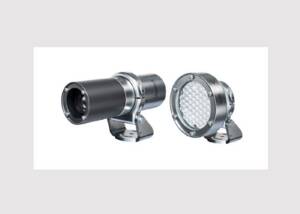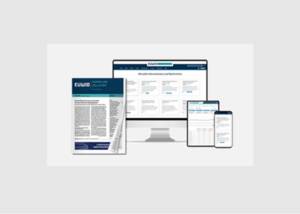Print mailing is experiencing a renaissance
News General news
Print mailings have been increasingly overshadowed by new forms of advertising among advertisers and agencies in recent years. "Advertising dollars" have been shifted toward email marketing and social media, while print advertising has been labeled "antiquated." For a time, it seemed as if social media, messenger services and email marketing might supplant traditional mail advertising altogether.

Print advertising is enjoying increasing popularity again
As we all know, the dead live longer. As evidenced by the CMC Dialogpost Study 2020 published by the Collaborative Marketing Club, print mailing continues to hold its own as one of the most popular forms of dialog marketing despite new competition.
Most recently, this form of advertising was even able to achieve slight growth again. According to the CMC study, around 19% of all advertising expenditure went to "print mailings" in 2019.
Of course, it is obvious to look for the reasons for this astonishing result. To this end, the European Federation of Envelope Manufacturers (FEPE) has analyzed various studies that have recently appeared on the subject of print advertising. The most important findings are briefly presented below.
An overflowing e-mail inbox creates frustration
Clearly, consumers' "digital overload" plays a major role in the success of print mailings.
"Today, it's not the mailboxes where you are overwhelmed with irrelevant messages, it's the email inbox," says Philipp Westermeyer, organizer of OMR, the largest European festival for digital marketing and technology in Hamburg.
"How do we make people care?" continued Westermeyer, "The letter carrier and classic print mailing are experiencing a renaissance. In addition to low competition on the channel, direct mail is particularly suited to reactivating inactive and digitally unreachable customer segments...,"
So it's no surprise that a number of large international companies have rediscovered print mailings for themselves. According to Deutsche Post, around 23 million advertising letters are sent every day in Germany alone.
Advertising letters reach their target
Print mailings therefore reach people, because especially in times of overflowing e-mail inboxes, the printed, personally addressed mailing enjoys the highest credibility and appreciation among consumers.
A well-made mailing impresses the recipient with its look and feel, with a successful print finish, die-cutting or the surprise element of a special smell.
All these elements are now part of the production standard, at the envelope producers organized in the FEPE, and can be used throughout Europe to increase the recipient's attention.
Print mailings are effective and economical
In the past two years, several studies have examined the performance of print mailings in the currently booming online trade. All the studies have come to very similar conclusions and confirm that print mailings are highly cost-effective.
Deutsche Post/DHL, for example, has determined that 78% of existing customers can be reached by mail, in compliance with data protection regulations and without an additional double opt-in. With e-mails, on the other hand, the data protection-compliant reachability of existing customers is 9% at best.
Even more interesting, however, is the average conversion rate (CVR) of sent print mailings determined in the CMC study. For the online stores studied, this was an astonishing 4.9%.
This means that 4.9% of all advertising mailings resulted in an order. This value could not even be approached by any other advertising medium. Other advantages of print mailings include larger customer shopping baskets (+8%) and greater customer loyalty.
Every € spent on a print mailing results in €9.90 in additional sales (RoAs). So even though the production costs of a print mailing are higher than an email campaign, print mailings are a very profitable solution thanks to increased average shopping baskets and the high response rate at the end of the day.
Print mailing and digitization will complement each other even more in the future
Despite all the advantages of printed advertising, new, digital forms of advertising have now gained a firm foothold. The advantages of fast and cost-effective implementation of campaigns will certainly continue to be used by advertisers in the future, especially since automation and dynamic, data-based individualization can also be implemented more easily in the digital environment.
But there are now marketing automation systems (MAS) that combine the advantages of both worlds and create open interfaces to the analog advertising world.
For campaign management, this provides the option of first triggering an e-mail advertisement. If this e-mail is not opened within a specified period, an additional print e-mail is automatically sent to take advantage of the better response rate and CVR of this medium.
It is also possible for campaign managers to trigger print mailings from the familiar digital environment in order to bypass the doubl opt-in with end customers in this way.
In summary, print mailings continue to enjoy a high level of trust among customers and represent an effective and economical medium for advertisers. The linking of print mailings and digital advertising also creates new opportunities that will further consolidate the importance of print mailings in dialog marketing.










